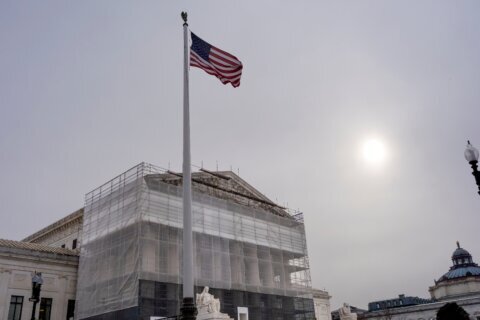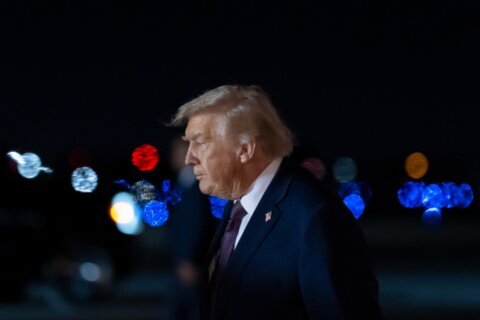BIRMINGHAM, Ala. (AP) — Born in the ashes of the smoldering South after the Civil War, the Ku Klux Klan died and was reborn before losing the fight against civil rights in the 1960s. Membership dwindled, a unified group fractured, and one-time members went to prison for a string of murderous attacks against blacks. Many assumed the group was dead, a white-robed ghost of hate and violence.
Yet today, the KKK is still alive and dreams of restoring itself to what it once was: an invisible empire spreading its tentacles throughout society. As it marks 150 years of existence, the Klan is trying to reshape itself for a new era.
Klan members still gather by the dozens under starry Southern skies to set fire to crosses in the dead of night, and KKK leaflets have shown up in suburban neighborhoods from the Deep South to the Northeast in recent months. Perhaps most unwelcome to opponents, some independent Klan organizations say they are merging with larger groups to build strength.
In a series of interviews with The Associated Press, Klan leaders said they feel that U.S. politics are going their way, as a nationalist, us-against-them mentality deepens across the nation. Stopping or limiting immigration — a desire of the Klan dating back to the 1920s — is more of a cause than ever. And leaders say membership has gone up at the twilight of President Barack Obama’s second term in office.
Joining the Klan is as easy as filling out an online form — provided you’re white and Christian. Members can visit an online store to buy one of the Klan’s trademark white cotton robes for $145, though many splurge on the $165 satin version.
While the Klan has terrorized minorities during much of the last century, its leaders now present a public front that is more virulent than violent. Leaders from several different Klan groups all said they have rules against violence aside from self-defense, and even opponents agree the KKK has toned itself down after a string of members went to prison years after the fact for deadly arson attacks, beatings, bombings and shootings.
“While today’s Klan has still been involved in atrocities, there is no way it is as violent as the Klan of the ’60s,” said Mark Potok of the Southern Poverty Law Center, an advocacy group that tracks activity by groups it considers extremist.
“That does not mean it is some benign group that does not engage in political violence,” he added.
Klan leaders told the AP that most of today’s groups remain small and operate independently, kept apart by disagreements over such issues as whether to associate with neo-Nazis, hold public rallies or wear the KKK’s trademark robes in colors other than white.
It’s impossible to say how many members the Klan counts today since groups don’t reveal that information, but leaders claim adherents in the thousands among scores of local groups called Klaverns.
“Most Klan groups I talk to could hold a meeting in the bathroom in McDonald’s,” said Chris Barker, imperial wizard of the Loyal White Knights of the Ku Klux Klan in Eden, North Carolina. As for his Klavern, he said, “Right now, I’m close to 3,800 members in my group alone.”
The Anti-Defamation League, the Jewish protection group that monitors Klan activity, describes Barker’s Loyal White Knights as the most active group today, but estimates it has no more than 200 members. The ADL puts total Klan membership nationwide at around 3,000.
The Alabama-based SPLC estimates the Klan has about 190 chapters nationally with no more than 6,000 members total, which would be a mere shadow of its estimated 2 million to 5 million members in the 1920s.
“The idea of unifying the Klan like it was in the ’20s is a persistent dream of the Klan, but it’s not happening,” Potok said.
Formed just months after the end of the Civil War by six former Confederate officers, the Klan originally seemed more like a college fraternity with ceremonial robes and odd titles for its officers. But soon, freed blacks were being terrorized, and the Klan was blamed. Hundreds of people were assaulted or killed as whites tried to regain control of the defeated Confederacy. Congress effectively outlawed the Klan in 1871, and the group died.
The Klan seemed relegated to history until World War I, but it was resurrected as waves of immigrants arrived from Europe and elsewhere, and grew more as the NAACP challenged the South’s Jim Crow laws in the 1920s. Millions joined, including community leaders like bankers and lawyers.
That momentum declined, and best estimates place membership at about 40,000 by the mid-’60s, the height of the civil rights movement. Klan members were convicted of using murder as a weapon against equality in states including Mississippi and Alabama, where one Klansman remains imprisoned for planting the bomb that killed four black girls in a Birmingham church in 1963.
KKK leader Brent Waller, imperial wizard of the United Dixie White Knights in Mississippi, said stopping immigration — not blocking minority rights — is the Klan’s No. 1 issue today.
And other Klan leaders say Donald Trump’s ascendancy in the GOP is a sign things are going their way.
“You know, we began 40 years ago saying we need to build a wall,” Arkansas-based Klan leader Thomas Robb said.
Despite trying to rebrand itself, the Klan has not stepped away from burning crosses. As the sun set on a warm Saturday in April, Klan members gathered in a huge circle in a northwest Georgia field to set a cross and Nazi swastika afire.
“White power!” they chanted in unison.
“Death to the ungodly! Death to our enemies!”
___
Associated Press writer Ryan Phillips in Stone Mountain, Georgia, and AP photographer Mike Stewart in Rome, Georgia, contributed to this report.
Copyright © 2025 The Associated Press. All rights reserved. This material may not be published, broadcast, written or redistributed.






